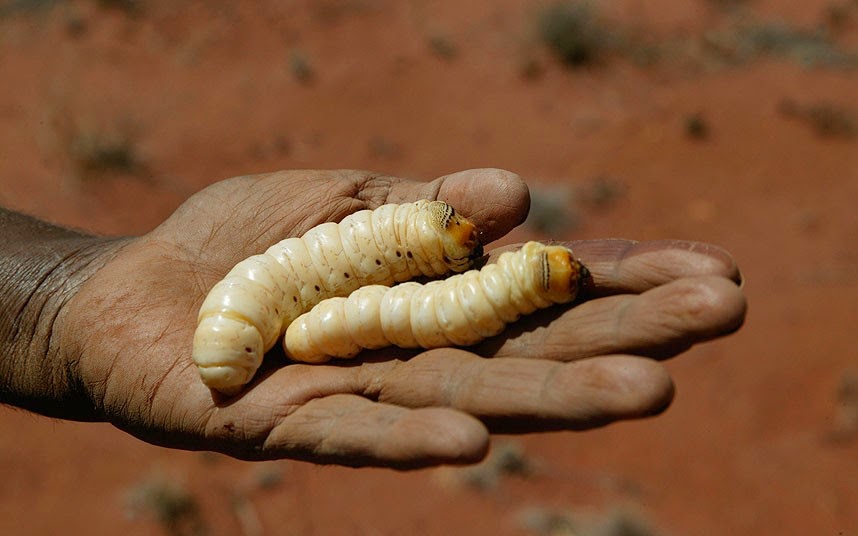Sannakji or sannakji hoe is a variety of hoe, or raw dish, in Korean cuisine. It consists of live nakji (hangul: 낙지, a small octopus) that has been cut into small pieces and served immediately, usually lightly seasoned with sesame and sesame oil. The nakji pieces are usually still squirming on the plate. It can also be served whole.
8. Frog
What happen if you swallow a live frog? The frog will quickly be attacked by your stomach acid and die, then be digested. Frogs are normally eaten in most of the world where they occur naturally. The exception to this rule would be if you swallowed a live frog of the poison dart frog family. The frog would still quickly die, but so would you. -Stupid Genius
7. Shrimp
6. Witchetty Grub
The witchetty grub (also spelled witchety grub or witjuti grub) is a term used in Australia for the large, white, wood-eating larvae of several moths. Particularly it applies to the larvae of the cossid moth Endoxyla leucomochla, which feeds on the roots of the Witchetty bush (named after the grubs) that is found in central Australia. The term may also apply to larvae of other cossid moths, ghost moths (Hepialidae), and longhorn beetles (Cerambycidae). The term is used mainly when the larvae are being considered as food. The grub is the most important insect food of the desert and has historically been a staple in the diets of Aboriginal Australians.
5. Ants
The live ants served by chef Rene Redzepi with creme fraiche were the stars of the show when Noma -- voted World’s Best Restaurant for three years in a row -- reinvented itself as a pop-up at Claridge’s over the weekend.
4. Casu Marzu
Casu marzu (also called casu modde, casu cundídu, casu fràzigu in Sardinian language, or in Italian formaggio marcio, "rotten cheese") is a traditional Sardinian sheep milk cheese, notable for containing live insect larvae. Although found mostly in Sardinia, Italy, the cheese is also found in Corsica, France (former Italian island until 1768) where the local dialect is very similar to Italian. The name of the cheese is pronounced the same in Corsica and Sardinia, but is spelled "casgiu merzu" in the Corsican language.
3. Fish
Ikizukuri, lit. "prepared alive", is the preparation of sashimi made from live seafood. Fish is usually used, but sometimes octopus, shrimp and lobster are used instead. The restaurant may have one or several tanks of live sea animals for a customer to choose from. The practice is controversial, and ikizukuri is outlawed in Australia and Germany.
2. Snake
A man in Odisha, India, is reported to eat live snakes to seek attention from fellow villagers.
1. Sea Urchine
Sea urchins or urchins (/ˈərtʃɪnz/), sometimes called sea hedgehogs, are small, spiny, globular animals which, with their close kin, such as sand dollars, constitute the class Echinoidea of the echinoderm phylum. About 950 species of echinoids inhabit all oceans from the intertidal to 5000 m deep. The shell, or "test", of sea urchins is round and spiny, typically from 3 to 10 cm (1.2 to 3.9 in) across. Common colors include black and dull shades of green, olive, brown, purple, blue, and red. Sea urchins move slowly, and feed on mostly algae. Sea otters, sea stars, wolf eels, triggerfish, and other predators hunt and feed off sea urchins. Their roe is a delicacy in many cuisines. The name "urchin" is an old name for the round spiny hedgehogs which sea urchins resemble.
.jpg)







